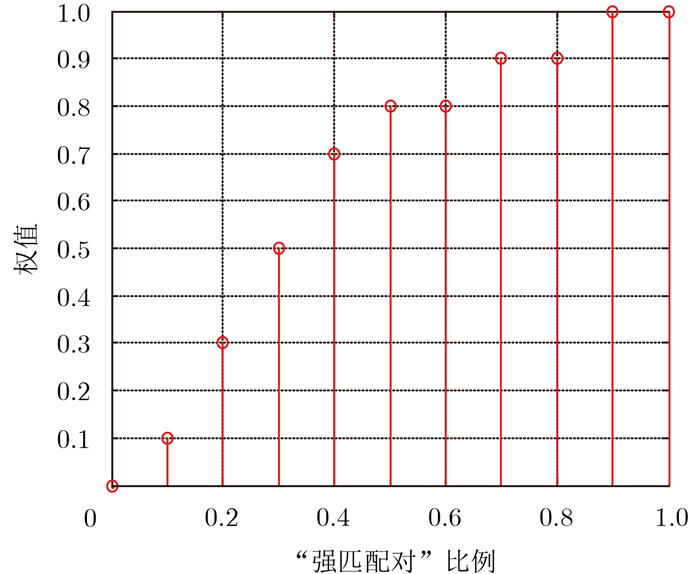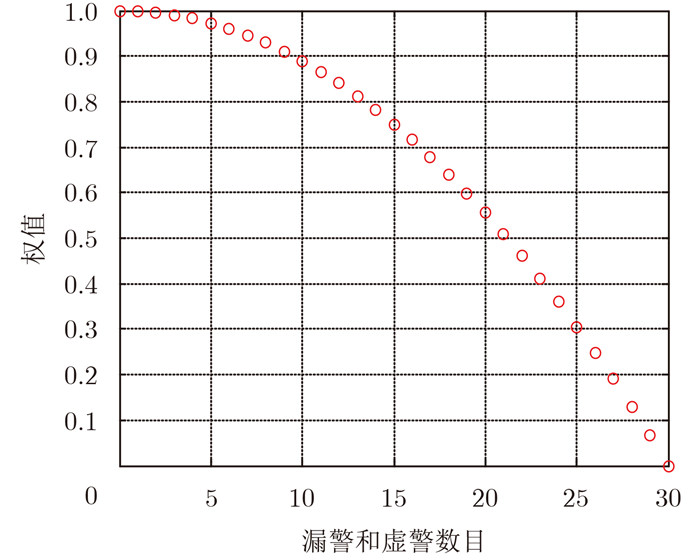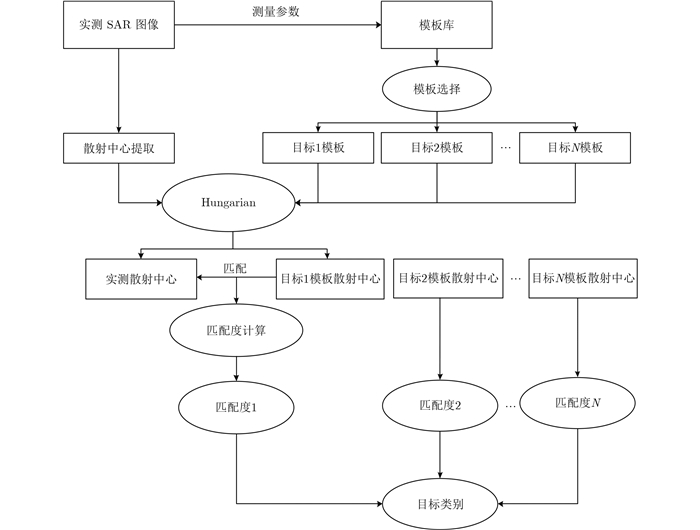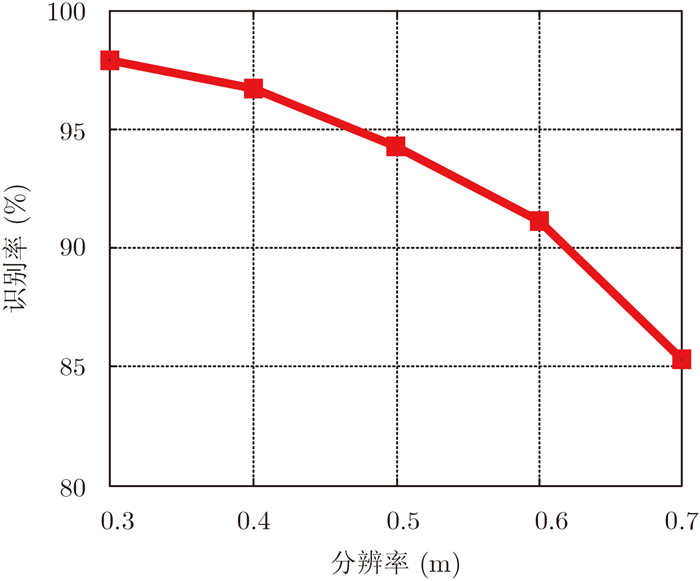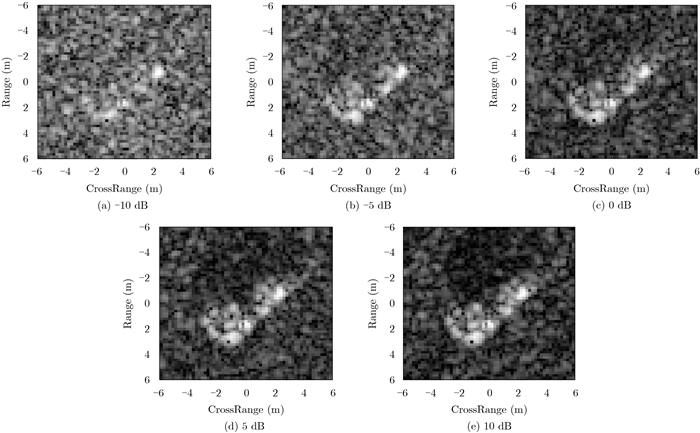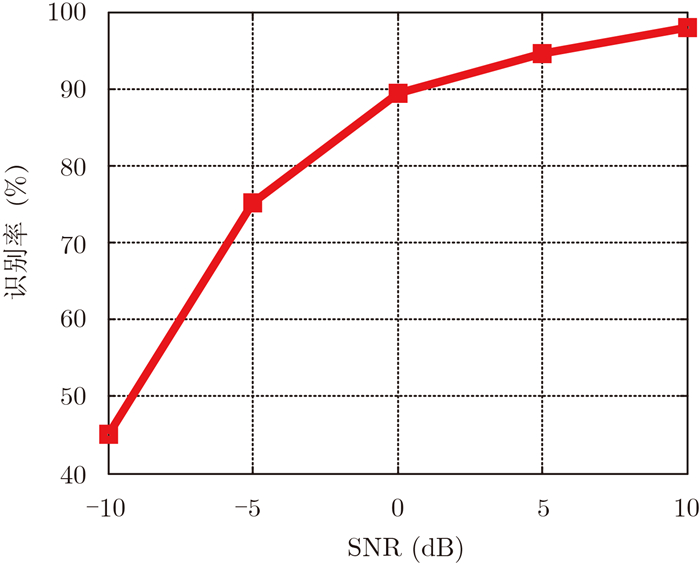- Home
- Articles & Issues
-
Data
- Dataset of Radar Detecting Sea
- SAR Dataset
- SARGroundObjectsTypes
- SARMV3D
- AIRSAT Constellation SAR Land Cover Classification Dataset
- 3DRIED
- UWB-HA4D
- LLS-LFMCWR
- FAIR-CSAR
- MSAR
- SDD-SAR
- FUSAR
- SpaceborneSAR3Dimaging
- Sea-land Segmentation
- SAR Multi-domain Ship Detection Dataset
- SAR-Airport
- Hilly and mountainous farmland time-series SAR and ground quadrat dataset
- SAR images for interference detection and suppression
- HP-SAR Evaluation & Analytical Dataset
- GDHuiYan-ATRNet
- Multi-System Maritime Low Observable Target Dataset
- DatasetinthePaper
- DatasetintheCompetition
- Report
- Course
- About
- Publish
- Editorial Board
- Chinese
| Citation: | Ding Baiyuan, Wen Gongjian, Yu Liansheng, Ma Conghui. Matching of Attributed Scattering Center and Its Application to Synthetic Aperture Radar Automatic Target Recognition[J]. Journal of Radars, 2017, 6(2): 157-166. doi: 10.12000/JR16104 |
Matching of Attributed Scattering Center and Its Application to Synthetic Aperture Radar Automatic Target Recognition
DOI: 10.12000/JR16104 CSTR: 32380.14.JR16104
-
Abstract
Attributed scattering center is one of important features of Synthetic Aperture Radar (SAR) image. In this paper, a method for the matching of attributed scattering centers and its application to SAR target recognition is proposed. First, the attributed scattering centers of the test SAR image and template SAR images are extracted on the basis of the attributed scattering model. Second, the Hungarian algorithm is employed to match the two scattering center sets. Based on the one to one correspondence, we design a new similarity measure to evaluate the similarity between the two scattering center sets that will decide the target type of the test image. The similarity measure considers the effects of each individual scattering center, single matching pair, and missing alarms and false alarms; thus, it is more comprehensive. The experiment based on moving and stationary target acquisition and recognition database demonstrates the validity of the proposed method. -

-
References
[1] 黄培康, 殷红成, 许小剑.雷达目标特性[M].北京:电子工业出版社, 2005: 22–24.Huang Pei-kang, Yin Hong-cheng, and Xu Xiao-jian. Radar Target Signature[M]. Beijing: Publishing House of Electronics Industry, 2005: 22–24.[2] Keller J B. Geometrical theory of diffraction[J]. Journal of the Optical Society of America, 1962: 52(2): 116–130. doi: 10.1364/JOSA.52.000116[3] Gerry M J, Potter L C, and Gupta I J. A parametric model for synthetic aperture radar measurements[J]. IEEE Transactions on Antennas and Propagation, 1999, 47(7): 1179–1188. doi: 10.1109/8.785750[4] Chiang H-C, Moses R L, and Potter L C. Model-based classification of radar images[J]. IEEE Transactions on Information Theory, 2000, 46(5): 1842–1854. doi: 10.1109/18.857795[5] 唐涛, 粟毅.散射中心特征序贯匹配的SAR图像目标识别方法[J].系统工程与电子技术, 2012, 34(6): 1131–1135. http://www.cnki.com.cn/Article/CJFDTOTAL-XTYD201206011.htmTang Tao and Su Yi. Object recognition in SAR imagery using sequential feature matching of scattering centers[J]. System Engineering and Electronics, 2012, 34(6): 1131–1135. http://www.cnki.com.cn/Article/CJFDTOTAL-XTYD201206011.htm[6] Sirui Tian, Kuiying Yin, Chao Wang, et al.. An SAR ATR method based on scattering center feature and bipartite graph matching[J]. IETE Technical Review, 2015, 32(5): 364–375. doi: 10.1080/02564602.2015.1019941[7] Bhanu B and Lin Y Q. Stochastic models for recognition of occluded targets[J]. Pattern Recognition, 2003, 36(12): 2855–2873. doi: 10.1016/S0031-3203(03)00182-1[8] Dungan K E and Potter L C. Classifying transformationvariant attributed patterns[J]. Pattern Recognition, 2010, 43(11): 3805–3816. doi: 10.1016/j.patcog.2010.05.033[9] Dungan K E and Potter L C. Classifying sets of attributed scattering centers using a hash coded database[C]. Proceedings of Algorithms for Synthetic Aperture Radar Imagery XVII, SPIE, Florida, 2010: 7737R01–7737R11.[10] Zhou Jianxiong, Shi Zhiguang, Chen Xiao, et al.. Automatic target recognition of SAR images based on global scattering center model[J]. IEEE Transactions on Geosciences and Remote Sensing, 2011, 49(10): 3713–3729. doi: 10.1109/TGRS.2011.2162526[11] Kim Taejoon and Dong Miaomiao. An iterative Hungarian method to joint relay selection and resource allocation for D2D communications[J]. IEEE Wireless Communications Letters, 2014, 3(6): 625–629. doi: 10.1109/LWC.2014.2338318[12] Li D, Zhang G, Wu Z, et al.. An edge embedded markerbased watershed algorithm for high spatial resolution remote sensing image segmentatio[J]. IEEE Transactions on Image Processing, 2010, 19(10): 2781–2787. doi: 10.1109/TIP.2010.2049528[13] Jing M, Zhou X, and Qi C. Quasi-Newton Iterative Projection algorithm for sparse recovery[J]. Neurocomputing, 2014, 144: 169–173. doi: 10.1016/j.neucom.2014.04.055[14] Chen J, Li Y, Wang J, et al.. Adaptive CLEAN algorithm for millimetre wave synthetic aperture imaging[J]. IET Image Processing, 2015, 9(3): 218–225. doi: 10.1049/iet-ipr.2014.0443[15] 陶勇, 胡卫东.基于图像域的属性散射中心分析[J].信号处理, 2009, 25(10): 1510–1514. doi: 10.3969/j.issn.1003-0530.2009.10.004Tao Yong and Hu Wei-Dong. Analysis of attributed scattering center based on image domain[J]. Signal Processing, 2009, 25(10): 1510–1514. doi: 10.3969/j.issn.1003-0530.2009.10.004[16] 徐牧, 王雪松, 肖顺平.基于Hough变换与目标主轴提取的SAR图像目标方位角估计方法[J].电子与信息学报, 2007, 29(2): 370–374. http://www.cnki.com.cn/Article/CJFDTOTAL-DZYX200702024.htmXu Mu, Wang Xue-song, and Xiao Shun-ping. Target aspect estimation in SAR imagery based on Hough transform and major axis extraction[J]. Journal of Electronic & Information Technology, 2007, 29(2): 370–374. http://www.cnki.com.cn/Article/CJFDTOTAL-DZYX200702024.htm -
Proportional views

- Figure 1. The reconstruction of a BMP2 SAR image (Dynamic range: 40 dB)
- Figure 2. The matching of attributed scattering centers by Hungarian algorithm
- Figure 3. The calculation of the threshold
- Figure 4. The weight of the "strong assignments"
- Figure 5. The weight of MAs and FAs
- Figure 6. The general procedure of the proposed method
- Figure 7. The recognition performance under different model orders
- Figure 8. The MSTAR images under different resolutions
- Figure 9. The recognition performance under different resolutions
- Figure 10. The reconstructed MSTAR images under different SNRs
- Figure 11. The recognition performance under different SNRs


 Submit Manuscript
Submit Manuscript Peer Review
Peer Review Editor Work
Editor Work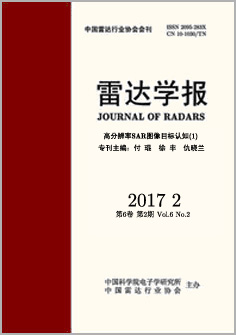

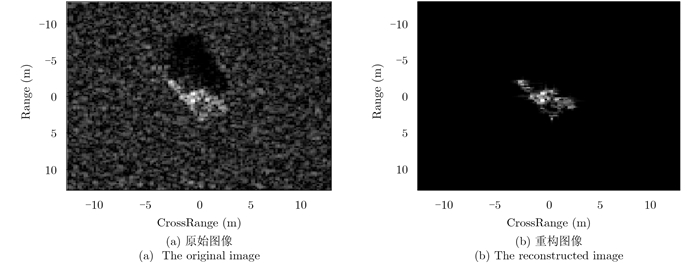



 DownLoad:
DownLoad:


